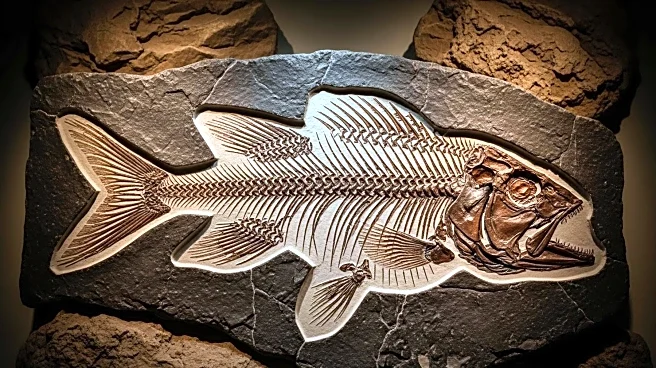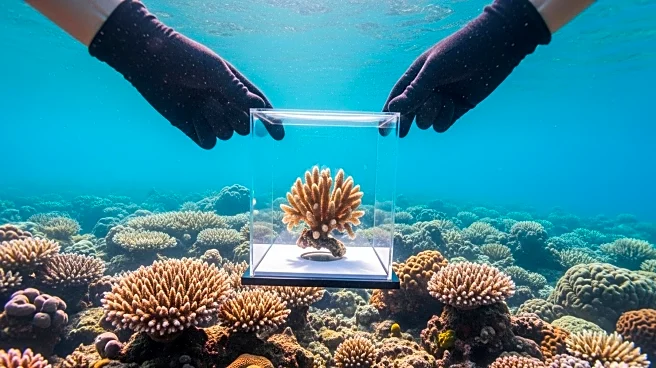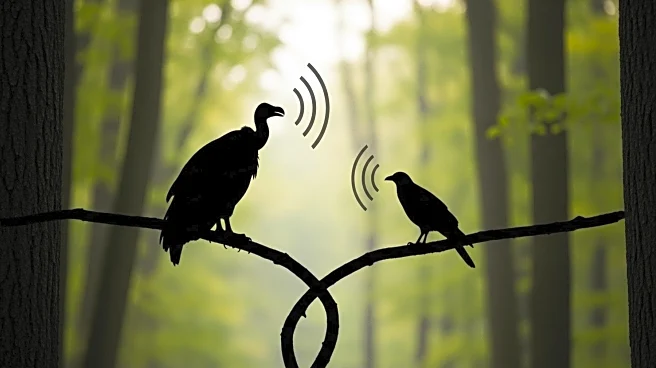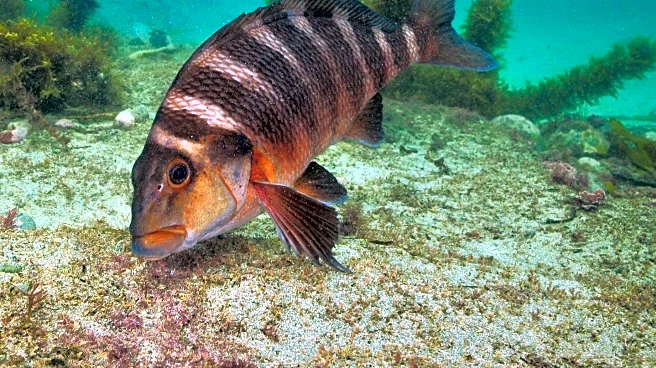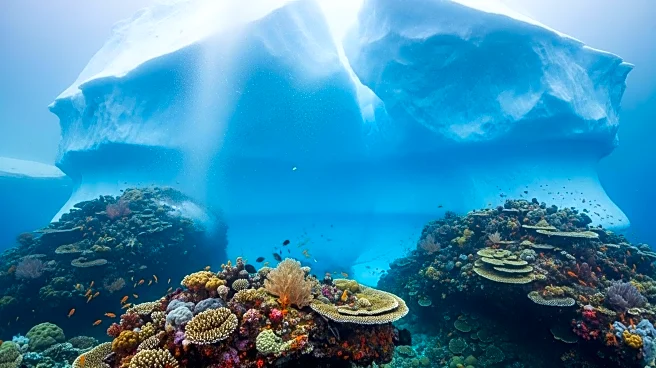What's Happening?
A new species of deep-sea predator, named Dulcibella camanchaca, has been discovered by scientists from the Woods Hole Oceanographic Institution and their partners in the Atacama Trench. This shrimp-like amphipod, measuring about 4 centimeters, is a unique predator thriving in the hadal zone, a region of the ocean characterized by extreme depths and darkness. Unlike many of its neighbors that scavenge, Dulcibella camanchaca actively hunts using specialized appendages. The discovery was made during the 2023 Integrated Deep-Ocean Observing System Expedition, where four specimens were collected at a depth of 7,902 meters. This finding is significant as it required the establishment of a new genus, highlighting the uniqueness of this species.
Why It's Important?
The discovery of Dulcibella camanchaca underscores the vast unknown biodiversity in the deep ocean and the importance of continued exploration. Identifying a new genus is a rare event in marine biology, akin to finding a new branch on the evolutionary tree. This discovery emphasizes the need for conservation efforts, especially as deep-sea mining interests grow and climate change impacts ocean ecosystems. The existence of such a specialized predator at extreme depths showcases life's adaptability and the potential for more undiscovered species in these remote environments.
What's Next?
The discovery of Dulcibella camanchaca may prompt further deep-sea exploration and research to uncover more about the biodiversity in the hadal zone. It also strengthens the case for protecting these environments from human activities such as mining. Scientists may continue to study the specimens collected to understand their ecological role and evolutionary history, potentially leading to more discoveries about life in extreme oceanic conditions.
Beyond the Headlines
This discovery raises ethical and environmental considerations regarding the exploitation of deep-sea resources. As interest in deep-sea mining grows, the potential impact on undiscovered species and ecosystems becomes a critical concern. The finding of Dulcibella camanchaca serves as a reminder of the delicate balance in these ecosystems and the need for responsible stewardship of oceanic resources.

